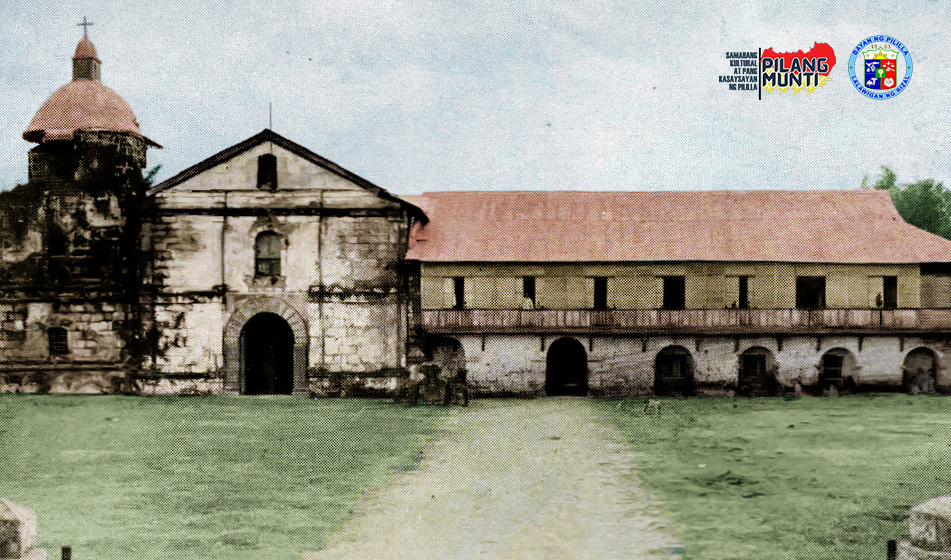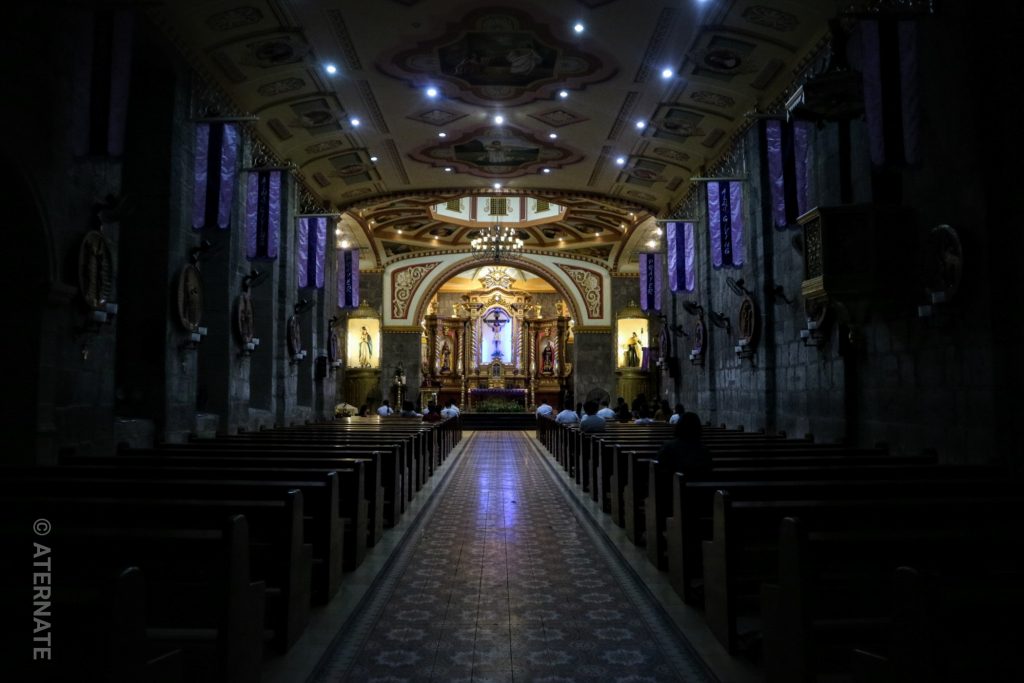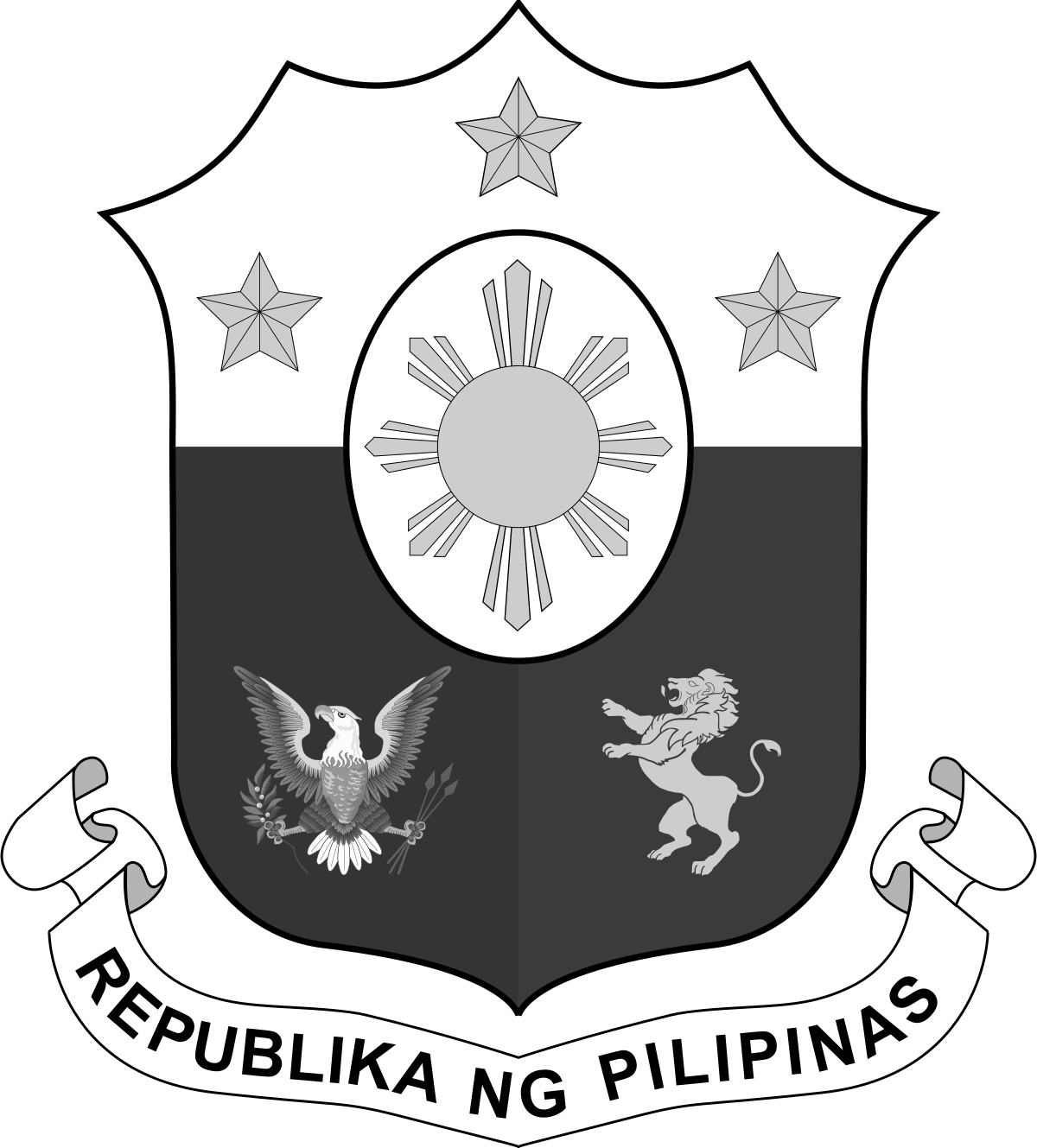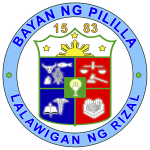
A Humble Beginning
The parish church and town (pueblo) of Pililla was originally created as a visita or barrio of St. Jerome Parish in Morong and had jurisdiction over the following rancherias at the time of its creation: Monte Tan-ay (mountain), Tigbi (site), Quisao, Yacat (mountain), and Dolo (river) towards Jalajala. When the first missionaries arrived in Pililla in 1572, they named the place Pila, Morong, since, it was under the administration of Morong, a nearby town. In 1583, the town was separated and became independent from Morong and gained a new name, Pililla, which means “small Pila”, to distinguish it from Pila, Laguna.
It was not too long when the first church was erected by the first missionaries through the help of the townspeople using nipa and bamboo as building materials. But Pililla did not have a resident priest until 1590. It was a humble beginning, yet, filled with awe as the early people of Pililla showed their great desire to encounter God amidst their community. The first church was burned down after sometime. The second structure made of nipa and woods was again built but this, too, was burned down. In 1599, the Superior Gobierno issued the license allowing the construction of a stone church, which was done in the following years. In 1606, Monte Tan-ay was separated from Pililla and became an independent town. In 1632, the church and the whole town of Pililla was burned, convincing the missionaries and townspeople to unite in rebuilding the town.
The New Church
Finally, the missionaries through the leadership of Rev. Fr. Francisco de la Asuncion o Cañizares, O.F.M. decided to put up a stone church in 1670. The church was completed in 1673, and the parish was dedicated to St Mary Magdalene. Like most churches in Laguna, the wall of the church was made of adobe. The church was simple and severe in design. It was year 1676 when Jalajala was finally separated from Pililla and became an independent town. While in 1679, an unforgettable event happened when the Laguna de Bay (Laguna Lake) rose to such extraordinary height that the parish priest, Rev. Fr. Nicolas de Santiago, O.F.M. celebrated the mass in the choir loft and the people of Pililla attended mass riding in bancas inside the church. In 1848, Rev. Fr. Jose de Guadalajara, O.F.M. renovated all the altars and repaired the church and the adjacent convent.
From 1851 to 1937 several priests were assigned as pastors of Pililla from the Franciscans and then from the Society of St. Columban (S.C.) or the Columbans. In 1938, Fr. Francis Vernon Douglas, S.C. was appointed pastor of Pililla. When Fr. Douglas arrived, he found out a half ruined church, a dilapidated presbytery and a mere handful practicing Catholics. He also noticed that the people of Pililla were poor, their faith even more so. Fr. Douglas began working with the youth of Pililla organizing recreational activities and a social action committee. Before long, his labors began to bear fruits. The church was repaired, the presbytery made habitable and faith was gradually coming back to the people.
Much did remain to be done but Fr. Douglas was not the man who would do it. When the Japanese invaded the Philippines shortly after Pearl Harbor, Japanese soldiers arrested Fr. Douglas on July 24, 1943. He was taken to a church in the neighboring town of Paete in Laguna, was beaten and experienced “water torture”. On the evening of July 27, 1943, Fr. Douglas, weak but still alive, was placed in a truck surrounded by Japanese soldiers, and then driven away. Fr. Douglas was never seen again and his body was never found.
From 1943 to 1958 more priests were assigned to Pililla, but since then no repair was done, that is why when Rev. Fr. Vicente Ma. Reyes took over as new parish priest in 1959; he found the church and convent both in ruins. The worst in ruin was the faith of the people.

Restoration of the Church and the Faith of the People
Another renovation was made after more than a hundred years and this was done during the time of Rev. Fr. Vicente Ma. Reyes through the support of the prominent families of Pililla and friends in nearby towns. But Fr. Reyes did not focus only on the construction of the church building, but also in awakening the faith of the parishioners that he also found in ruin. More than the absence of any habitable dwelling for the priest in the town, what saddened Fr. Reyes was the seeming indifference of the townspeople to their faith. The Catholic Church did not even have a single religious organization and Sunday Mass goers were practically few.
Instead of folding under the seemingly insurmountable odds stacked against him, Fr. Reyes took Pililla’s case as a challenge, one that would last his entire lifetime. The first step, Fr. Reyes took in the rehabilitation of his parish was the organization of various parish groups which would involve parishioners in enriching and meaningful activities. He began convincing and encouraging the elders and the more active parishioners to form religious organizations. He founded first the Confraternity of Our Lady of Lourdes, and then in 1960 the Catholic Women’s League (CWL) and the Holy Name Society whose members and officers were inducted by no less than the late Archbishop of Manila, Most Rev. Rufino Cardinal Santos, D.D. himself.
After making headway in the religious life of his parishioners, Fr. Reyes turned his attention to the reconstruction and restoration of the parish church. He began the renovation of the church in 1962 and it was completed in 1965 giving the altars a modern look fit for our changing times. However, due to heavy rains brought about by typhoon Yoling, the ceiling was destroyed. Msgr. Reyes (he was conferred the title of Monsignor in 1969) once again began raising funds for the renovation. In 1975, another series of renovations was started to fix the damaged ceiling and was finished in 1976. On January 16, 1977, His Eminence Jaime Cardinal Sin, then Archbishop of Manila, blessed the fully restored church. A historical marker was also unveiled on that day by then First Lady Imelda Romualdez Marcos and Quezon City Mayor Adelina Rodriguez.
From the initial three organizations, other groups have emerged to contribute to their own share of involvement in the parish. The number of members joining different church organizations started to grow; hence, this became the foundations of a solid Catholic faith in the community. Through the years these organizations gained considerable following from even the far-flung barrios in Pililla. A stronger body, known as the Parish Pastoral Council was also organized to help the parish priest in the planning and implementation of programs and projects, and to serve as the overall coordinating body of the parish.
Msgr. Reyes is a man of principle and out of his own savings he acquired management of Pililla Academy in 1963 with the hope of continuing the tradition of the institution – that of promoting education in the community as a tool for progress and development. As the enrolment increased, new facilities were needed and part of the parish convent was constructed to become classrooms for the students of Pililla Academy. This served the purpose for a while until the time when Msgr. Reyes retired as parish priest in 1986, and then the classrooms in the parish convent were removed.
Msgr. Reyes served the parish for 27 years and retired in 1986 because of his age. He had done so much for the church and for the people of Pililla. He died in 1992 and his tomb can be found in the church garden called “Hardin ni Maria.”
With the change of leadership in 1986, the parishioners had to adjust to the new Parish Priest, Rev. Fr. Joselito Rocero. Initially, difficulties were encountered by the new pastor but were overcome with the assistance of dedicated lay leaders and parishioners. Fr. Rocero started working for the parish and he continued the works initiated by Msgr. Reyes. Through his own initiative and strong leadership, Fr. Rocero, opened the St. Mary Magdalene School in SY 1987-1988, to promote Catholic education in the community and to evangelize the next generation of Pililla. Once again, parts of the convent were constructed into classrooms to accommodate the students of St. Mary Magdalene Parochial School.
Municipality of pililla
DIRECTORY
- HOME
- MISSION VISION
- HISTORY
- CITIZENS CHARTER
- EMPLOYMENT OPPORTUNITY
- DOWNLOADS
Republic of the Philippines
All content is in the public domain unless otherwise stated.
About GOVPH
Learn more about the Philippine government, its structure, how government works and the people behind it.




